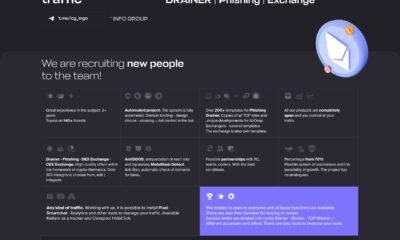When looking for a help desk ticketing system, it is essential to consider customer needs and agent workflows. Not all systems offer all the features. However, you can use the tools in combination to get the results you want.
In general, when choosing IT ticketing software, you should keep the following in mind:
Self-Service Portal
We want to use the self-service portal for our customers and help desk staff. An ideal open source helpdesk system should have this.The reason is:
- For customers: Providing a customer self-service portal allows customers to fix common problems. This implies that the help desk ticketing system and personnel will get fewer low-priority tickets.
- For help desk agents: The Knowledge Management Portal enables agents to find answers as they work to assist their customers quickly.
External Knowledge Base
For customer assistance, the external knowledge base presents a unique win-win-win situation (yep, it’s a triple win situation). First, customers prefer to solve problems themselves. This reduces the company’s ticket volume and overall support costs.
The exterior knowledge base, in particular, may be used to post customer FAQs, product and service updates, and troubleshooting tips. Customers can search the knowledge base or browse by category. This will prevent you from issuing tickets while you are happy and help you quickly find the information you need.
Internal Knowledge Base
The internal knowledge base helps IT teams work more efficiently by allowing employees to help themselves. Busy users will find that they can find the answers and directions they need without waiting. The internal knowledge base is also handy for agents in processing service requests. You can save SOPs, how-to guides, technical documentation, and best practices for processing requests.
Unified Smart Inbox
One of the system’s unique features is the ability to generate help desk tickets from a variety of sources, including email, live chat, social media, and phone. This will increase team productivity. Here’s what you can do with your integrated inbox:
- Manually create a ticket
- For common issues, use pre-filled templates quickly.
- Sends an automatic reply when an end-user submits an issue, allowing them to reply.
- Please provide a file.
- To add context, keep all previous exchanges in the same ticket.
- It stops two agents from simultaneously responding to the same ticket (collision detection)
- Join it with the open source ticketing system
Therefore, most ticketing systems allow you to define triggers and rules to automatically change ticket status, priority, categories, and other ticket attributes. So, some provide the ability to define custom workflows, eliminating much of the manual work. This is the actual operation. For example, suppose the ticket system software can set rules to automatically prioritise and prioritise tickets based on an email address, subject, ticket category, and other criteria.
You can create rules to flag all issues originating from a particular email (major customer or cleave manager) and assign tickets to the most advanced IT support professionals. So, automation is beneficial for companies that need to associate a custom set of products or services (such as MSR) with each customer.
Safety
Customer details are often attached to service tickets, and passwords are exchanged. Therefore, ticket system software must be able to protect sensitive data.
Some companies choose on-premises installations to eliminate all potential threats. Some people prefer a cloud-based ticketing system. Both have their strengths and weaknesses, but safety is a concern in all cases. So, the following are some essential security features to note in the IT Help Desk:
- IP restrictions to allow only employees to log in to the backend
- Message encryption to protect sensitive data
- Access control to define user groups and privileges within your organisation
- Virus check to ensure that malicious attachments are not sent
- SSL URL encryption for cloud-based systems
Incident and problem management
Incident management is like firefighting. Incidents are first identified and logged, then diagnosed and resolved as quickly as possible. So, looking at the incident management lifecycle below, you can see that the required functionality is available in almost all ticket management software. So, it is a great idea to go through the osticket demo.


















